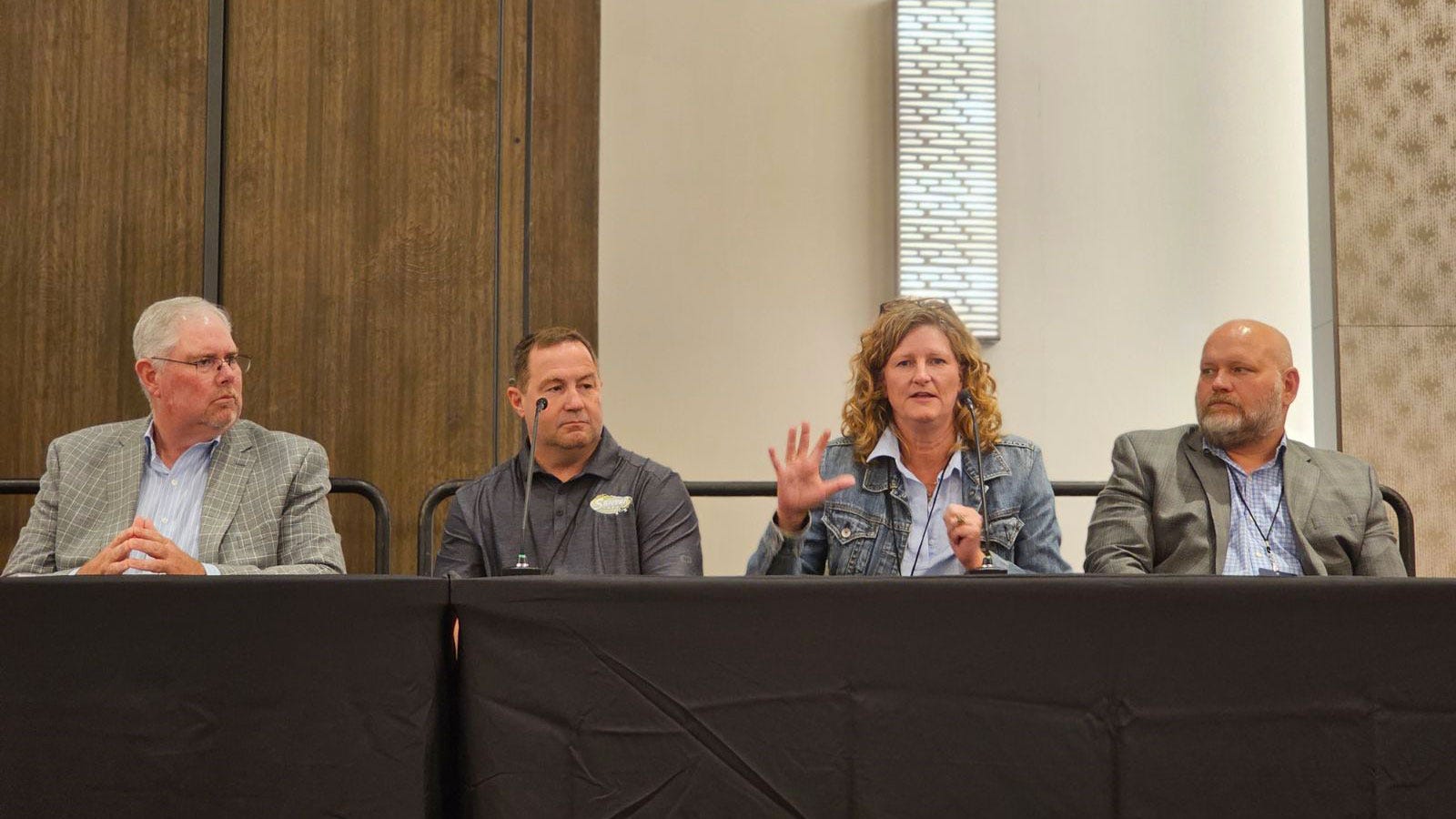April 25, 2024

Modern tractors may look like those from two decades ago, but inside, new models have gone through a revolution.
Today’s digitized machines don’t just shift gears and pull planters. They also process complex mathematical equations, interpret images, run algorithms and make decisions in real time. Collectively, these back-end processes enable cutting-edge technologies like high-speed planting, targeted spraying, self-driving capability and artificial intelligence.
“Why are we talking about AI, which is something so abstract, in relation to something that’s so physical [agriculture], so real?” asks Hendrik Hamann, a distinguished researcher and IBM’s chief scientist for the future of climate. He was a featured speaker at Texas A&M’s recent 2024 AI in Agriculture and Natural Resources Conference.
The answer lies in recent advancements that have been made in machine learning and foundational modeling — the backbone of AI. Appearing on paper as graphs and digits, these technically complex algorithms leverage existing datasets to predict future outcomes. They are the driving force behind increasingly automated farm machines and the systems that manage your farm’s data.
‘Last frontier of digital discovery’
Expanding on his own question, Hamann points to other sectors like media and business, which have rapidly digitized. Given that businesses function around written information that’s easy to process, it makes sense that AI applications like ChatGPT are readily applicable. There’s no translation required. The physical world, on the other hand, cannot easily be translated in bits, numbers or letters.
That’s why agriculture has lagged in comparison. But that’s changing as researchers apply AI systems that were created for other purposes to farming, Hamann says.
The physical world is “the last frontier of digital discovery,” and scientific researchers are “in full flight to digitize it,” he says. “We are still in the really early stages, given the complexity of soil, the complexity of weather, the complexity of agriculture.”
Even so, the change that has already taken place is evident. For example, machinery brands are increasingly focusing their efforts on expanding automation capability. Farm equipment companies scramble to rebrand themselves as technology firms. Most recently, Agco acquired Trimble Agriculture for $2 billion and jointly launched PTx Trimble, a new brand focused on automation.

TALK IT OUT: Kelly Whatley , owner of J&K Whatley Farms, talks on a panel alongside Texas farmer Todd Straley (left), Arkansas producer Travis Senter and Robert Strong with Texas A&M at the university’s recent conference on artificial intelligence in agriculture. (Shelley Huguley)
It’s also impossible to miss how much focus is being put on data collection. Every new machine comes standard with telematics. More than 90% of all data that’s ever been generated has been collected within the last two years.
“By some accounts, we generate around 100 to 200 exabytes from the physical world every month. We are doubling that rate roughly every six months,” Hamann says. An exabyte is a unit of digital information storage that equals about 1 billion gigabytes.
At this point, collecting data isn’t hard, according to Kelly Whatley, owner of J&K Whatley Farms near Corpus Christi, Texas. However, finding ways to put that data to use in a way that benefits growers without compromising business or privacy can be difficult.
“We have tons of data. Every time a tractor starts up, it starts mapping,” she says. “Data is data, but it can be twisted. I don’t think any of us want to see our data come back and harm us or harm our farms.”
Slow adoption ahead?
What does this impending digital evolution mean for farmers? For some, it could be a difficult transition.
“I do believe that there will be many slow to adopt. Those will be left behind rapidly,” says Bob Walker, who farms in western Tennessee. “I think we’ll see operators running multiple pieces of equipment at one time. Virtual dashboards will let operators see multiple views from one place.”
Agriculture’s digitization should, in theory, increase productivity. Hamann again correlates this expectation to what has happened in other sectors.
“We have seen improved supply chains and better yield. This has led to large gains,” he says. In turn, large gains improve business models, which opens “a pathway to sustainable growth.”
Growth solidifies changes
Todd Straley, a grower from the Plainview, Texas, and CEO of the Quaterway Cotton Growers gin, agrees with Hamann’s assessment. Straley says AI will speed farm consolidation.
Referencing a 2023 Harvard Business Review article, he says, “AI is not going to replace humans, but humans with AI are going to replace those without it.”
In his area, Straley says the average farm is 3,500 acres. He expects that to increase to 20,000 acres over time.
“The boomers are going to be moving out, and there are fewer and fewer young guys coming back to the farm,” Straley says. Artificial intelligence “will help that 20,000-acre guy” do more with less. “I think it [AI] is an equalizer.”
Whatley agrees: “I don’t think I can even fathom where AI will take us on the farm and in the world.”
Watch this interview of Hamann by Farm Progress editor Shelley Huguley.
About the Author(s)
You May Also Like






